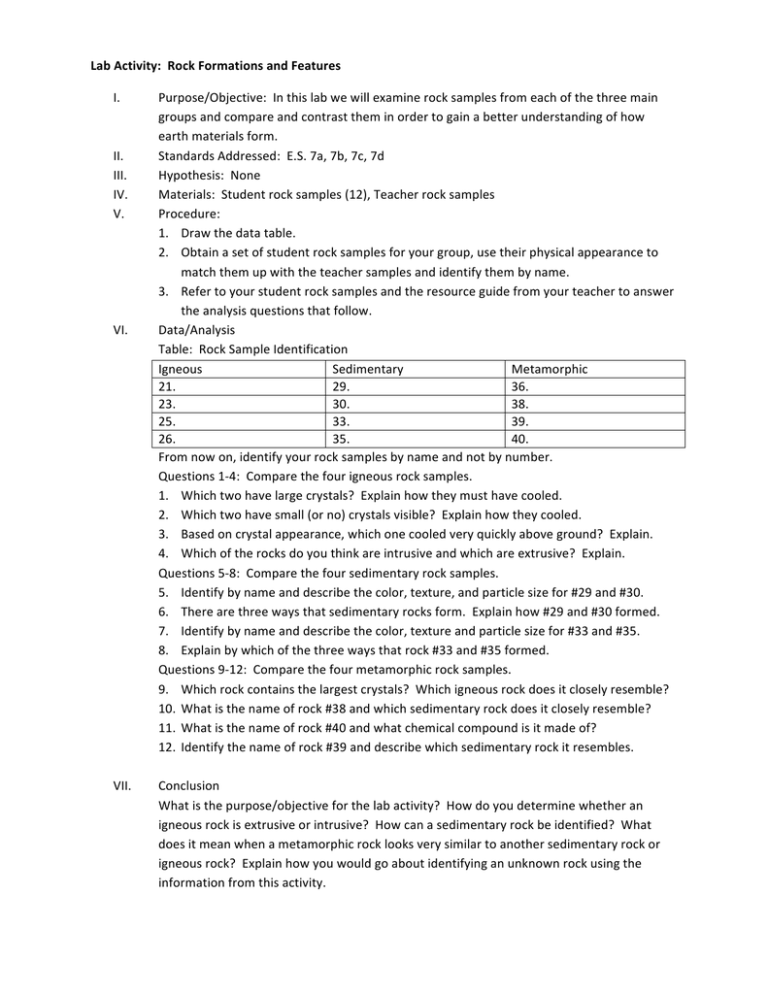Lab Activity: Rock Formations and Features I. Purpose/Objective: In
advertisement

Lab Activity: Rock Formations and Features I. II. III. IV. V. VI. Purpose/Objective: In this lab we will examine rock samples from each of the three main groups and compare and contrast them in order to gain a better understanding of how earth materials form. Standards Addressed: E.S. 7a, 7b, 7c, 7d Hypothesis: None Materials: Student rock samples (12), Teacher rock samples Procedure: 1. Draw the data table. 2. Obtain a set of student rock samples for your group, use their physical appearance to match them up with the teacher samples and identify them by name. 3. Refer to your student rock samples and the resource guide from your teacher to answer the analysis questions that follow. Data/Analysis Table: Rock Sample Identification Igneous Sedimentary Metamorphic 21. 29. 36. 23. 30. 38. 25. 33. 39. 26. 35. 40. From now on, identify your rock samples by name and not by number. Questions 1-­‐4: Compare the four igneous rock samples. 1. Which two have large crystals? Explain how they must have cooled. 2. Which two have small (or no) crystals visible? Explain how they cooled. 3. Based on crystal appearance, which one cooled very quickly above ground? Explain. 4. Which of the rocks do you think are intrusive and which are extrusive? Explain. Questions 5-­‐8: Compare the four sedimentary rock samples. 5. Identify by name and describe the color, texture, and particle size for #29 and #30. 6. There are three ways that sedimentary rocks form. Explain how #29 and #30 formed. 7. Identify by name and describe the color, texture and particle size for #33 and #35. 8. Explain by which of the three ways that rock #33 and #35 formed. Questions 9-­‐12: Compare the four metamorphic rock samples. 9. Which rock contains the largest crystals? Which igneous rock does it closely resemble? 10. What is the name of rock #38 and which sedimentary rock does it closely resemble? 11. What is the name of rock #40 and what chemical compound is it made of? 12. Identify the name of rock #39 and describe which sedimentary rock it resembles. VII. Conclusion What is the purpose/objective for the lab activity? How do you determine whether an igneous rock is extrusive or intrusive? How can a sedimentary rock be identified? What does it mean when a metamorphic rock looks very similar to another sedimentary rock or igneous rock? Explain how you would go about identifying an unknown rock using the information from this activity.


